ആർവികൾ, ബോട്ടുകൾ, ഗോൾഫ് കാറുകൾ, ഇലക്ട്രിക് വാഹനങ്ങൾ എന്നിവ പവർ ചെയ്യുമ്പോഴോ സോളാർ പവർ സിസ്റ്റങ്ങൾക്ക് സംഭരണം നൽകുമ്പോഴോ, എല്ലാ ലിഥിയം അയേൺ ഫോസ്ഫേറ്റ് ബാറ്ററികളും ലെഡ്-ആസിഡ് ബാറ്ററികളേക്കാൾ നിരവധി ഗുണങ്ങൾ വാഗ്ദാനം ചെയ്യുന്നു. അവർക്ക് കൂടുതൽ ആയുസ്സുണ്ട്. അവർക്ക് ഭാരം കുറവാണ്, എന്നിട്ടും ഉയർന്ന ശേഷിയുണ്ട്. അവയ്ക്ക് അറ്റകുറ്റപ്പണികൾ ആവശ്യമില്ല, ഏത് ദിശയിലും സ്ഥാപിക്കാൻ കഴിയും. അവ വേഗത്തിൽ ചാർജ് ചെയ്യുന്നു, അവ സംഭരിക്കാനോ ഉപയോഗിക്കാനോ കഴിയുന്നതിന് മുമ്പ് പൂർണ്ണ ചാർജ് ആവശ്യമില്ല. ലിഥിയം അയേൺ ഫോസ്ഫേറ്റ് ബാറ്ററികൾ, സാധാരണ -20°C മുതൽ 60°C വരെ, വിശാലമായ താപനിലയിൽ സുരക്ഷിതമായി ഡിസ്ചാർജ് ചെയ്യാൻ കഴിയും, ഇത് RV-കളും ഓഫ് ഗ്രിഡും ഉൾപ്പെടെയുള്ള തണുത്ത താപനില പ്രയോഗങ്ങൾ നേരിടുന്ന എല്ലാ കാലാവസ്ഥയിലും ഉപയോഗിക്കുന്നതിന് പ്രായോഗികമാക്കുന്നു. സോളാർ. വാസ്തവത്തിൽ, ലിഥിയം-അയൺ ബാറ്ററികൾക്ക് ലെഡ്-ആസിഡ് ബാറ്ററികളേക്കാൾ തണുത്ത താപനിലയിൽ മികച്ച പ്രകടനമുണ്ട്. ഉദാഹരണത്തിന്, 0 ഡിഗ്രി സെൽഷ്യസിൽ, ലെഡ്-ആസിഡ് ബാറ്ററിയുടെ ശേഷി 50% വരെ കുറയുന്നു, അതേസമയം ലിഥിയം അയേൺ ഫോസ്ഫേറ്റ് ബാറ്ററിക്ക് അതേ താപനിലയിൽ 10% നഷ്ടം മാത്രമേ ഉണ്ടാകൂ. കുറഞ്ഞ താപനിലയുള്ള ലിഥിയം ചാർജിംഗിന്റെ വെല്ലുവിളി ലിഥിയം-അയൺ ബാറ്ററികൾ റീചാർജ് ചെയ്യുന്ന കാര്യത്തിൽ, കഠിനവും വേഗമേറിയതുമായ ഒരു നിയമമുണ്ട്: ബാറ്ററിക്ക് മാറ്റാനാവാത്ത കേടുപാടുകൾ തടയാൻ, താപനില മരവിപ്പിക്കുന്നതിന് (0°C) താഴെയാകുമ്പോൾ അവ ചാർജ് ചെയ്യരുത്. അല്ലെങ്കിൽ 32°F) ചാർജ് കറന്റ് കുറയ്ക്കാതെ. നിങ്ങളുടെ ബാറ്ററി മാനേജ്മെന്റ് സിസ്റ്റം (BMS) നിങ്ങളുടെ ചാർജറുമായി ആശയവിനിമയം നടത്തുകയും ചാർജറിന് നൽകിയിരിക്കുന്ന ഡാറ്റയോട് പ്രതികരിക്കാനുള്ള കഴിവ് ഇല്ലെങ്കിൽ, ഇത് ചെയ്യാൻ പ്രയാസമാണ്. ഈ സുപ്രധാന നിയമത്തിന് പിന്നിലെ കാരണം എന്താണ്? ഉയർന്ന ഫ്രീസിങ് താപനിലയിൽ ചാർജ് ചെയ്യുമ്പോൾ, ബാറ്ററിയുടെ നെഗറ്റീവ് ടെർമിനലായ ആനോഡ് നിർമ്മിക്കുന്ന പോറസ് ഗ്രാഫൈറ്റ് സ്പോഞ്ചിലെന്നപോലെ ബാറ്ററിക്കുള്ളിലെ ലിഥിയം അയോണുകൾ കുതിർക്കുന്നു. ഫ്രീസിങ്ങിന് താഴെ, ലിഥിയം അയോണുകൾ ആനോഡ് കാര്യക്ഷമമായി പിടിച്ചെടുക്കുന്നില്ല. പകരം, പല ലിഥിയം അയോണുകളും ആനോഡിന്റെ ഉപരിതലത്തെ പൂശുന്നു, ലിഥിയം പ്ലേറ്റിംഗ് എന്ന് വിളിക്കപ്പെടുന്ന ഒരു പ്രക്രിയ, അതായത് ലിഥിയം കുറവാണ്.
കൂടുതല് വായിക്കുക…
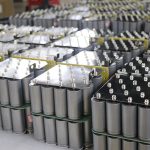

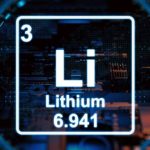
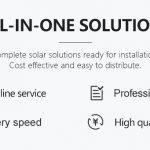

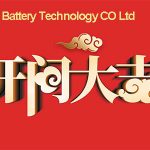

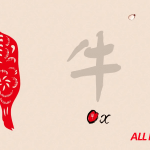


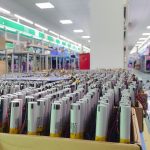
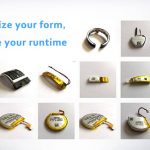
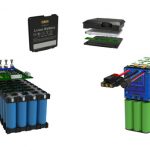
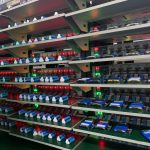
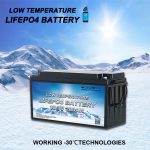
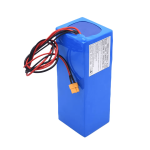
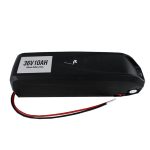
![]() 100% സുരക്ഷിത പേയ്മെന്റ്
100% സുരക്ഷിത പേയ്മെന്റ്![]()
